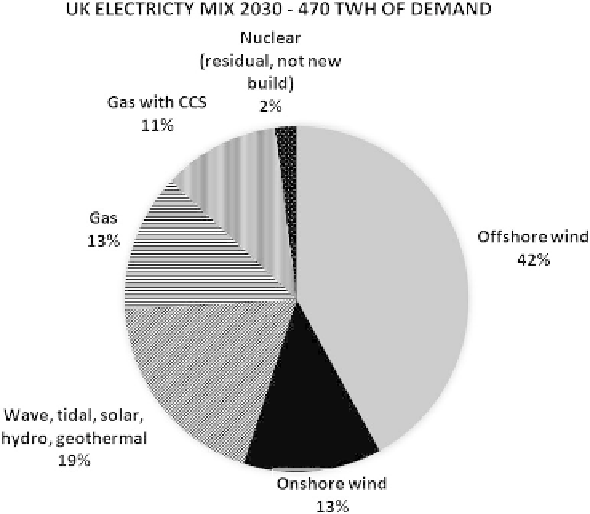Environmental Engineering Reference
In-Depth Information
Figure 2 Possible UK electricity mix 2030.
6.1 The Power Sector
Using the 2050 Pathways model developed by the Department for Energy &
Climate Change, Friends of the Earth has shown how the UK can move from
75% of its electricity being generated from fossil fuels in 2010 to roughly
75% being generated from renewable sources in 2030 (see Figures 1 and 2).
80
This does not involve new nuclear power stations. By 2030, the UK relies on a
mix of technologies: offshore wind, onshore wind, gas with CCS, unabated
gas, solar, wave, tidal, geothermal and hydro power, coupled with greater
levels of interconnection, energy storage and smart demand-management
methods to ensure reliability and security of supply. Gas is still used, but its
role is reduced.
The Committee on Climate Change (CCC) has set a target of a 60% cut in
emissions by 2030 as a milestone on the route to the longer-term target of an
80% emissions cut by 2050. The CCC has concluded that, to meet this goal
''it is crucial that the power sector is almost fully decarbonised by 2030''. It
has said that power sector emissions should be cut so that no more than 50 g
of carbon dioxide are produced per kWh of electricity generated. Friends of
the Earth's pathway meets this target.
6.2 Heat
Clearly the power sector is not the only, or indeed the main, sector.
81
In
2012, 40% of UK gas use was in the domestic sector; accordingly, our

